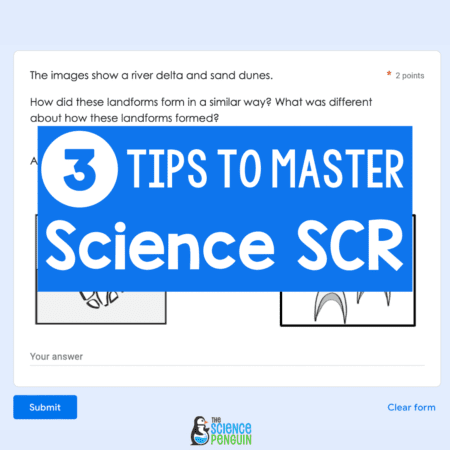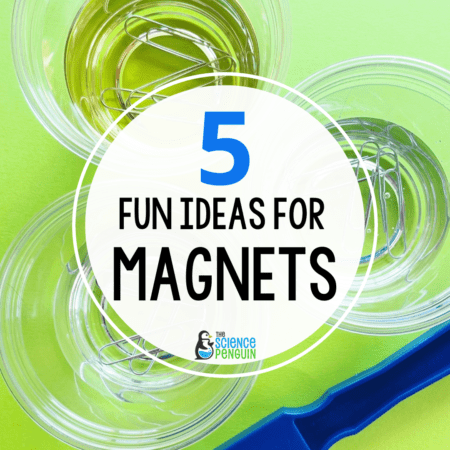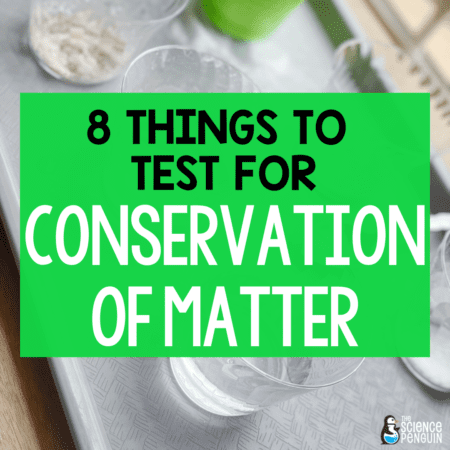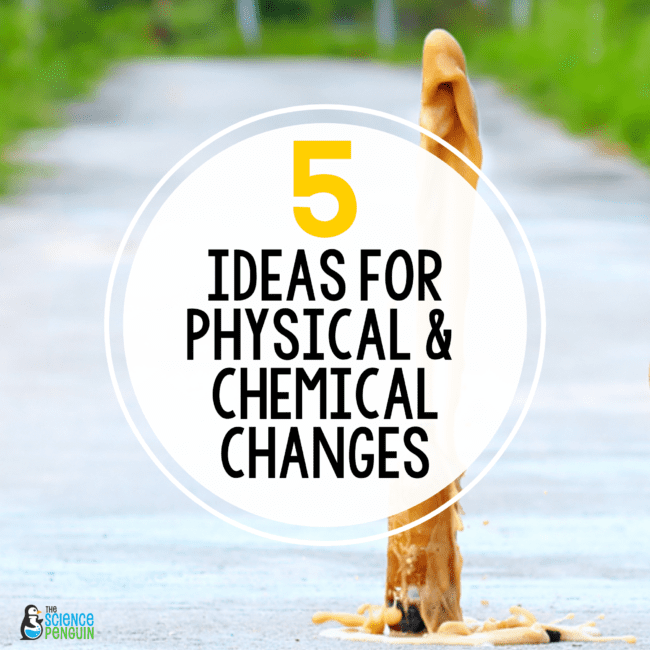
These ideas aren’t your average science experiments! We’re going to dig deeper with conservation of matter, CER, and a phenomenon-based science unit.
There are MANY physical and chemical changes you can observe, but here are 5 of my favorites for upper elementary. Many of these ideas include a focus on conservation of matter because the two concepts go hand in hand.
Physical changes are changes to the appearance or form of a substance, but the substance itself is not changed into a new substance. Chemical changes involve a substance changing into a new substance with different properties.
1. 🥛 Soda Surprise Investigation

This scenario is provided at the beginning of the chemical change unit. Students discuss the scenario then investigate what occurs when soda and milk are mixed. Warning: It’s pretty gross but makes for a meaningful introduction!
Try it on your own or see the unit on TpT: Chemical Change Phenomena-based Science
2. 🎈 Baking Soda & Vinegar Balloon
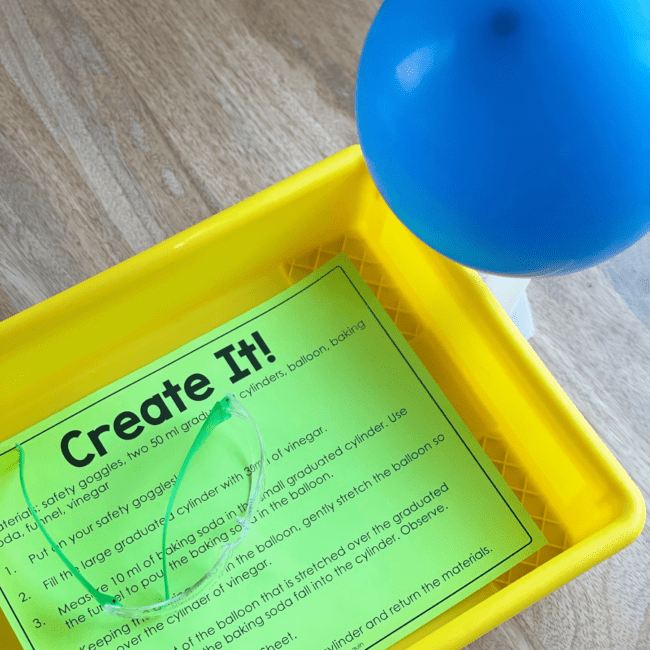
Take the traditional baking soda and vinegar reaction and add a balloon. When a balloon of baking soda is placed over a graduated cylinder of vinegar in a closed system, you can more easily observe the production of a gas. The reaction occurs and the balloon inflates!
There are many variations of this investigation from simple observation to experimental design to proving the conservation of matter.
This station is part of a stations set on TpT: Physical and Chemical Change Stations
3. 🌟 Glow Sticks

The glow stick is the perfect item to explore chemical change.
It’s cheap.
It’s not messy.
It’s a closed system.
Measure the mass of the glow stick before and after the chemical reaction to demonstrate the conservation of matter.
Try it on your own or see the unit on TpT: Conservation of Matter Phenomena-based Science
4. 🍬 Dissolving Sugar Cubes
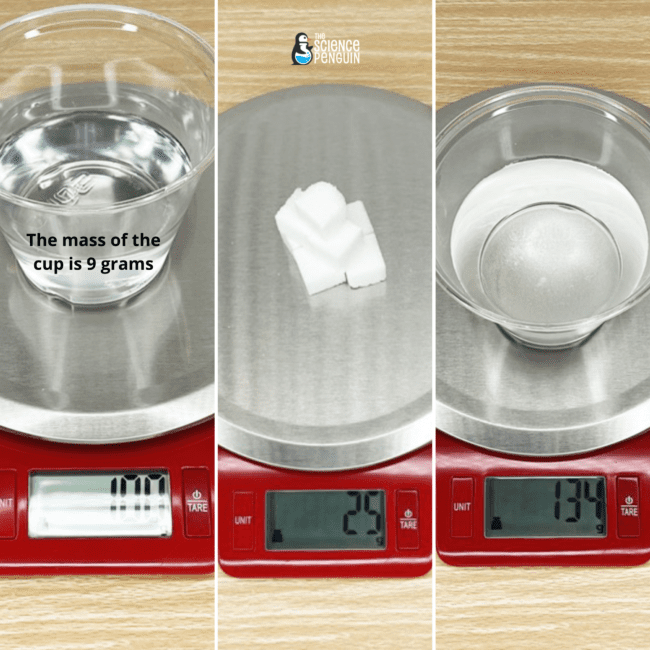
Dissolving is a simple observable physical change. I like sugar cubes for ease. In this lab, students demonstrate the conservation of matter while observing a physical change.
Materials
- balance or scale
- cup
- beaker with 100 ml water
- sugar cubes
- stirring rod/craft stick
Procedure
- Measure the mass of the cup.
- Add 100 ml of water to the cup.
- Measure 25 g of sugar cubes.
- Add the sugar cubes to water and stir to dissolve.
- Measure the mass of the solution. Be sure to subtract the mass of the cup.
Try it on your own or see the unit on TpT: Conservation of Matter Phenomena-based Science
5. 🥤 Mentos + Diet Coke Demonstration

A fun way to wrap up your unit? Do the classic Mentos and Diet Coke demonstration!
Ask students to determine whether a physical change or chemical reaction occurred.
This one is tricky because it certainly seems like a chemical reaction similar to baking soda and vinegar, but it’s actually a physical reaction. Tiny bumps along the candy’s surface make the bonds between water and carbon dioxide easily broken, bubbling up, and resulting in that cool eruption.
Sign up for the Free Resource Library
This is an exclusive library of 40+ science printables, labs, activities, and games for grades 3-6. Sign up and check your email for immediate access.

